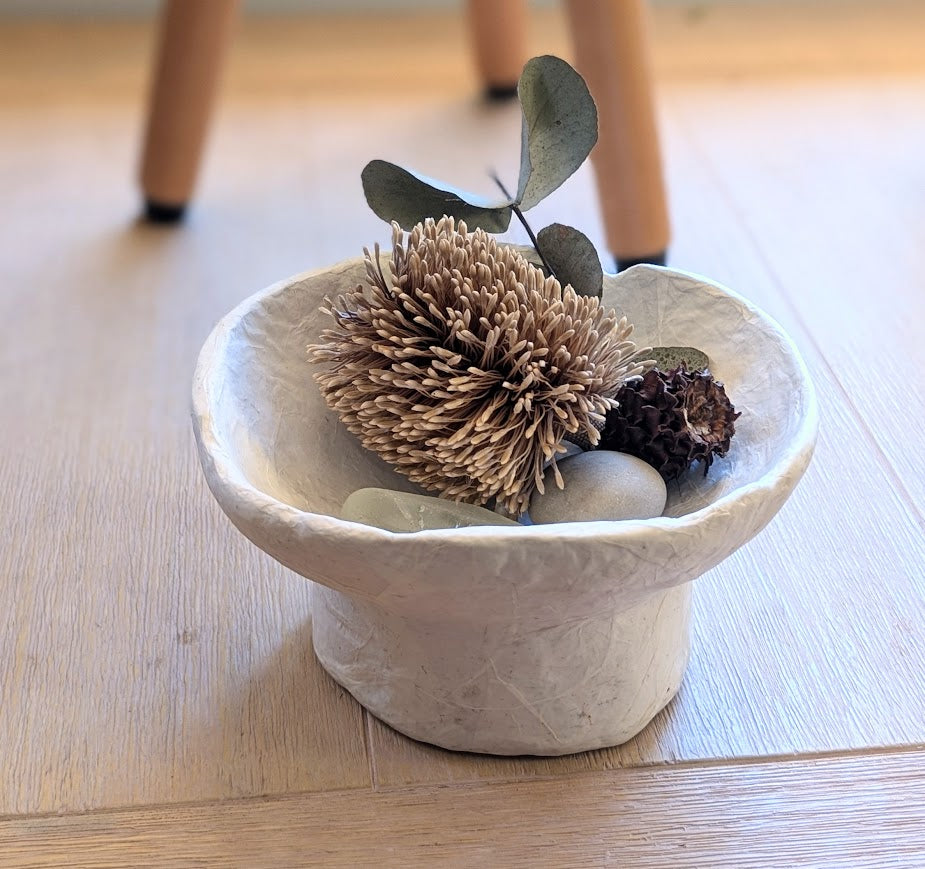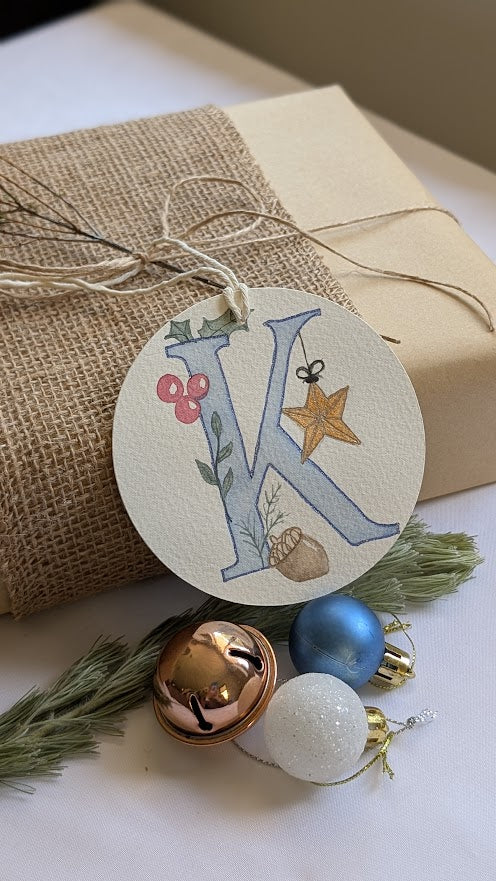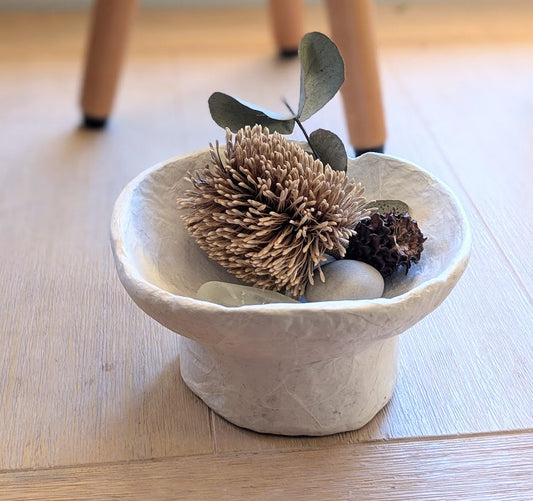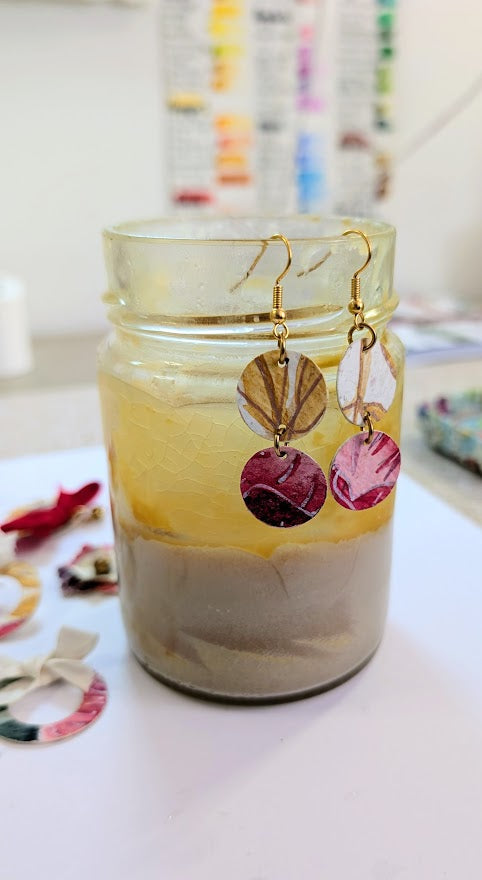
Sustainable Home Décor vs. Mass-Market Finds: Why Handmade Matters
Home décor doesn’t need to come at the expense of the environment—or your values. While mass-produced décor items from popular low-cost department stores are affordable and convenient, they often lack the ethical foundations and environmental mindfulness of handcrafted, sustainable pieces.
At Paper & Palette Studio, I create bowls and trays from recycled paper pulp, sealing them with natural waxes and oils. These pieces are more than just functional objects—they’re tactile, textural works of art that tell a story of sustainability.

Why Choose Sustainable Home Décor?
- Reduces Waste: Handmade bowls repurpose discarded paper fibres, keeping them out of landfill.
- Unique Design: Each piece is one-of-a-kind, with organic textures and subtle irregularities.
- Natural Finishes: Plant-based sealants like beeswax, carnauba wax, and tung oil avoid toxic chemicals.
- Slow Living: Every item is created with care and intention, not churned out by machines.
These values align with other leading sustainable makers. Cindy Poole transforms discarded glass into luminous jewellery and installations in Esperance, WA, while Mike Sullivan crafts striking sculptures and furniture from salvaged timber. Both demonstrate how waste can be reimagined into enduring works of art.
A Popular Department Store Bowl: Accessibility with Trade-Offs
Take, for instance, a plinth-style décor bowl from a popular low-cost department store. Priced at under $15, it’s affordable, stylish, and easy to replace. It’s designed to give you an “on-trend” look at a fraction of the cost.
But there are limitations:
- Durability: Machine-made ceramics are often fragile and treated as disposable.
- Environmental Cost: Industrial-scale manufacturing and overseas shipping contribute to carbon emissions and waste.
- Uniformity: Each bowl is identical, lacking the warmth and uniqueness of handmade work.
While these bowls are budget-friendly and fit quickly into changing trends, they don’t carry the same ethical or ecological weight as handcrafted décor.
Questioning Ethical and Environmental Impacts
Large-scale retailers often promote their home brands as ethical and sustainable, with public commitments such as:
- Greater transparency in their supply chains.
- Sourcing improvements like Better Cotton initiatives.
- Claims of waste reduction and sustainable design.
However, independent assessments suggest caution:
- Environmental action is often rated as “Not Good Enough”, with limited evidence of genuine emissions reductions or chemical waste management.
- Labour standards remain inconsistent, with little proof of living wages or safe working conditions.
- Ultra-low prices rely on overseas production in regions with weaker regulations, raising questions about both environmental and human impacts.
This model encourages volume-driven consumption, where affordability is prioritised over long-term sustainability.
Handmade Paper Bowls: An Alternative with Depth
In contrast, each Paper & Palette Studio bowl:
- Uses recycled paper pulp, giving waste new life.
- Is sealed with non-toxic natural finishes, keeping both homes and ecosystems safe.
- Carries a story and sense of connection to the maker.
- Is built to last, not to be replaced next season.
Like Cindy Poole’s glass or Mike Sullivan’s timber, these bowls are part of

a growing movement that sees materials differently: not as waste, but as resources for art and daily life.
Styling Ideas for Sustainable Home Décor
Sustainable Handmade Bowls:
- Coffee table centrepiece filled with seed pods or dried native flowers.
- Jewellery or keepsake dish for earrings and rings.
- Bathroom styling for rolled towels or natural soaps.
- Dining accent layered with fruit or botanicals.
The Beauty of Imperfection
Unlike mass-produced décor, handmade bowls embrace natural irregularities. Each curve, texture, and finish reflects the process of human hands and sustainable design. These imperfections are not flaws—they’re the very marks that give character and authenticity to your home.
Conclusion
Decorating sustainably doesn’t mean compromising on style. By choosing handcrafted pieces, you’re valuing artistry, durability, and ethics, while supporting a more mindful relationship with your home and the planet.
Mass-market décor plays a role in accessibility—but often at the expense of the environment and ethical labour. Handmade alternatives, like recycled paper bowls, or the works of Cindy Poole and Mike Sullivan, show us that design can be both beautiful and sustainable.
Ultimately, it’s about curating a home that reflects not only your style but also your values.

Further Inspiration
If you’d like to explore more makers redefining sustainable art and design:
-
Cindy Poole – Glass Artist
Based in Esperance, WA, Cindy creates jewellery and architectural installations from reclaimed glass, transforming waste into radiant art. -
Mike Sullivan – Wood Designer & Sculptor
Known for his use of salvaged and sustainably sourced timber, Mike crafts furniture and sculpture that celebrates natural form and responsible design.


